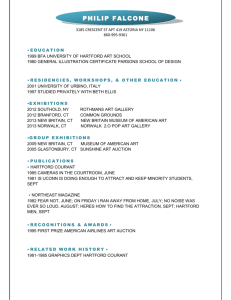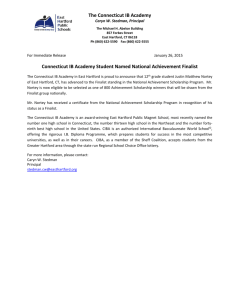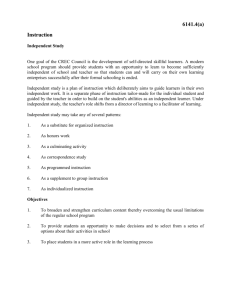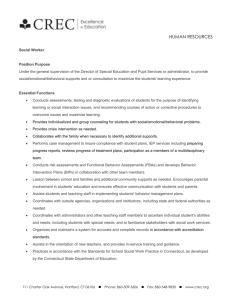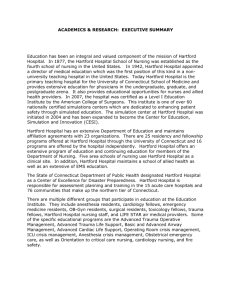EDUC 300 Research Proposal Karen Taylor Research Question
advertisement
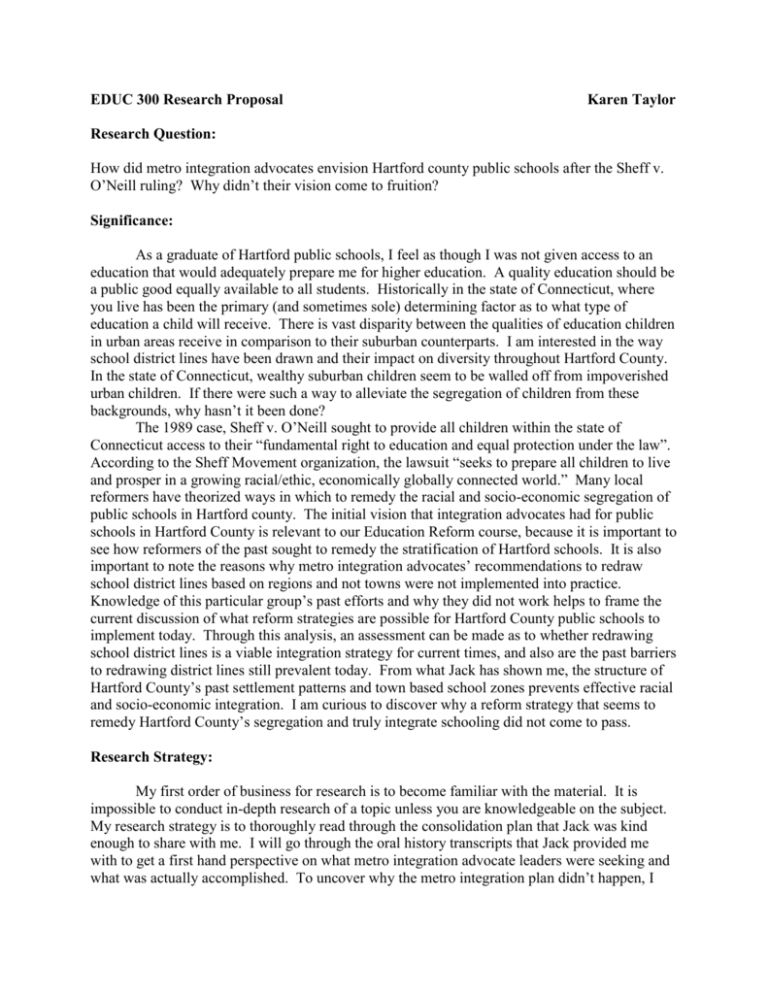
EDUC 300 Research Proposal Karen Taylor Research Question: How did metro integration advocates envision Hartford county public schools after the Sheff v. O’Neill ruling? Why didn’t their vision come to fruition? Significance: As a graduate of Hartford public schools, I feel as though I was not given access to an education that would adequately prepare me for higher education. A quality education should be a public good equally available to all students. Historically in the state of Connecticut, where you live has been the primary (and sometimes sole) determining factor as to what type of education a child will receive. There is vast disparity between the qualities of education children in urban areas receive in comparison to their suburban counterparts. I am interested in the way school district lines have been drawn and their impact on diversity throughout Hartford County. In the state of Connecticut, wealthy suburban children seem to be walled off from impoverished urban children. If there were such a way to alleviate the segregation of children from these backgrounds, why hasn’t it been done? The 1989 case, Sheff v. O’Neill sought to provide all children within the state of Connecticut access to their “fundamental right to education and equal protection under the law”. According to the Sheff Movement organization, the lawsuit “seeks to prepare all children to live and prosper in a growing racial/ethic, economically globally connected world.” Many local reformers have theorized ways in which to remedy the racial and socio-economic segregation of public schools in Hartford county. The initial vision that integration advocates had for public schools in Hartford County is relevant to our Education Reform course, because it is important to see how reformers of the past sought to remedy the stratification of Hartford schools. It is also important to note the reasons why metro integration advocates’ recommendations to redraw school district lines based on regions and not towns were not implemented into practice. Knowledge of this particular group’s past efforts and why they did not work helps to frame the current discussion of what reform strategies are possible for Hartford County public schools to implement today. Through this analysis, an assessment can be made as to whether redrawing school district lines is a viable integration strategy for current times, and also are the past barriers to redrawing district lines still prevalent today. From what Jack has shown me, the structure of Hartford County’s past settlement patterns and town based school zones prevents effective racial and socio-economic integration. I am curious to discover why a reform strategy that seems to remedy Hartford County’s segregation and truly integrate schooling did not come to pass. Research Strategy: My first order of business for research is to become familiar with the material. It is impossible to conduct in-depth research of a topic unless you are knowledgeable on the subject. My research strategy is to thoroughly read through the consolidation plan that Jack was kind enough to share with me. I will go through the oral history transcripts that Jack provided me with to get a first hand perspective on what metro integration advocate leaders were seeking and what was actually accomplished. To uncover why the metro integration plan didn’t happen, I will use the consolidation plan as a starting point and think like a historical actor to pick out key points that may have been controversial at the time. I will narrow them down and investigate the major themes. Initially, I used the files Jack gave me and searched for similar terms via the Internet. As I sift through this first batch of related sources, I will look through education reform documents of the time to get a general idea of what suggestions or alternatives were on the table at the time of this recommendation. Hartford obviously chose to go in a different direction to address racial and socio-economic integration. What made the current strategy more compelling? Since Sheff v. O’Neill was a catalyst for school integration in Hartford, I will use the major findings of the case to foreground my research. Primary Sources: “About Sheff v. O’Neill.” Sheff Movement. Web. 5 April 2013. <http://www.sheffmovement.org/aboutsheffvoneill.shtml> Bruno, Gordon. Interview with Jennifer Williams. The Unexamined Remedy Metropolitan School District Oral History. Hartford, 2004. Hasegawa, Jack. Interview with Jennifer Williams. The Unexamined Remedy Metropolitan School District Oral History. Hartford, 2004. Judson, George. “Poverty Tied To Failures In Hartford.” New York Times 20 Feb. 1993. Web. McDermott, Kathryn. Interview with Jennifer Williams. The Unexamined Remedy Metropolitan School District Oral History. Hartford, 2004. Sacks, Michael. “Suburbanization and the Racial/Ethnic Divide in the Hartford Metropolitan Area.” 2003. PDF file. Staples, Cameron. Interview with Jennifer Williams. The Unexamined Remedy Metropolitan School District Oral History. Hartford, 2004. The Connecticut Center for School Change. The Unexamined Remedy. 1998. PDF file.
